Forums
- Forums
- Duggy's Reference Hangar
- USAAF / USN Library
- Martin XB-48
Martin XB-48
Post a reply
- Go to Previous topic
- Go to Next topic
- Go to Welcome
- Go to Introduce Yourself
- Go to General Discussion
- Go to Screenshots, Images and Videos
- Go to Off topic
- Go to Works in Progress
- Go to Skinning Tips / Tutorials
- Go to Skin Requests
- Go to IJAAF Library
- Go to Luftwaffe Library
- Go to RAF Library
- Go to USAAF / USN Library
- Go to Misc Library
- Go to The Ops Room
- Go to Made in Germany
- Go to Campaigns and Missions
- Go to Works in Progress
- Go to Juri's Air-Raid Shelter
- Go to Campaigns and Missions
- Go to Works in Progress
- Go to Skinpacks
- Go to External Projects Discussion
- Go to Books & Resources
-
 Main AdminThe Martin XB-48 officially originated back in 1944, at a time when the USAAF was already aware of German advances in the field of jet propulsion, especially as applied to the development of jet bombers. Alarmed by German developments, the War Department called for bids on a new family of jet-powered bombers, with gross weights ranging from 80,000 pounds to more than 200,000 pounds. These new aircraft were to be powered either by TG-180 or TG-190 engines which were then under development at General Electric. The TG-180 was eventually built by the Allison Division of General Motors as the J35, and the TG-190 was built by the General Electric company as the J47.
Main AdminThe Martin XB-48 officially originated back in 1944, at a time when the USAAF was already aware of German advances in the field of jet propulsion, especially as applied to the development of jet bombers. Alarmed by German developments, the War Department called for bids on a new family of jet-powered bombers, with gross weights ranging from 80,000 pounds to more than 200,000 pounds. These new aircraft were to be powered either by TG-180 or TG-190 engines which were then under development at General Electric. The TG-180 was eventually built by the Allison Division of General Motors as the J35, and the TG-190 was built by the General Electric company as the J47.
On November 17, 1944, the USAAF issued a specification calling for a bomber with a range of 3000 miles, a service ceiling of 45,000 feet, a tactical operating altitude of 40,000 feet, and a maximum speed of 550 mph. On January 29, 1945 these requirements were amended to stipulate that the aircraft would have to carry specific types of bombs, including the conventional M-121, a 10,000-pound "dam-buster" earthquake bomb.
The Glenn L. Martin company of Baltimore, Maryland came up with the Model 223 in response to this requirement. The Martin proposal was submitted to the Air Technical Service Command on December 9, 1944, and led to Letter Contract W33-038 ac-7675. Approved on December 9, 1945, this initial contract called for one mockup of the Martin Model 223. The designation XB-48 was assigned.
At the same time, three other contractors were awarded development contracts, North American for the XB-45, Convair for the XB-46, and Boeing for the XB-47.
The end of the Second World War resulted in the cancellation of many projects and the delay of others. However, the War Department felt that the development of a jet-powered bomber should still be pressed forward with the utmost speed, and the XB-45, XB-46, XB-47, and XB-48 contracts were left untouched. In 1946, the USAAF decided to forego the competition that would ordinarily be held between the four entries and opted instead to review the available designs to see which of the contestants could be produced first. By that time, the XB-45 and XB-46 were nearing completion, but the XB-47 and XB-48 were still at least two more years away. Since the USAAF was guided by what it felt to be a sense of great urgency, it decided to appraise the XB-45 and XB-46 right away and choose one of them for immediate production. Any consideration of the XB-47 and XB-48 would be deferred until after they had flown. if either the XB-47 or XB-48 turned out to be markedly superior to the plane that was then being produced, then that aircraft would be purchased and the currently-produced version would be phased out. This is indeed what happened when the XB-47 appeared.
On December 13, 1946, the original contract was superseded by W33-038 AC-13492 which called for two XB-48 prototypes, spare parts, and a bomb bay mockup. The first XB-48 was to be flight tested and delivered by September 30, 1947, with the second being delivered by June 30, 1948.
The XB-48 was to be powered by six General Electric TG-180 turbojets, later to be redesignated J35. The six engines were encased three each in lifting aerofoil section pods housed underneath each wing. The lift pods had air ducts between the pods and had adjustable tailpipes on the engines. The pilot and copilot were seated in tandem underneath a canopy-type enclosure, and the bombardier/navigator sat in the extreme nose. The wings were too thin to house a conventional landing gear, so The aircraft had a bicycle-type tandem undercarriage, with tandem twin-wheel units retracting into the fuselage ahead and behind the bomb bay. The aircraft had a pair of smaller outrigger wheels underneath each wing outboard of the engine pods. This arrangement had been tested on a XB-26H and had been found to be feasible.
The armament was to have been a pair of 0.50-inch machine guns housed in a remotely-controlled tail turret and guided by an AN/APG-27 radar.
The first XB-48 (serial number 45-59585) made its maiden flight on June 22, 1947. It took off from Martin's company airfield at Baltimore and landed at the Patuxent Naval Air Station some 80 miles away. It was powered by six TG-180-B1 (J35-GE-7) engines. Development and testing of the XB-48 was delayed by engine difficulties. The first XB-48 went through no less than 14 engines during its first 44 flights.
In the spring of 1948, after early flight test data had been obtained on both the Boeing XB-47 and the Martin XB-48, the Air Force concluded that the XB-47 had an appreciably better performance and showed greater development potential. In addition, the Martin design was over 50 mph slower than its guaranteed speed, and no production of the XB-48 was ordered. The end of the line for the XB-48 became official in September of 1948, when the Air Force ordered its first lot of B-47 Stratojets.
The second XB-48 (powered by six J35-GE-9 turbojets) flew for the first time on October 16, 1948, some three months behind schedule. However, this delay did not matter very much, since by that time the fate of the XB-48 program had already been decided.
In early 1949, Martin attempted to revive the B-48 program by proposing that the second XB-48 be re-engined with four XT40 turboprops installed in reconfigured nacelles. This converted XB-48 was to have been a prototype for the Martin Model 247-1, an airplane which the contractor insisted was capable of competing with the B-47, B-50, and B-54. The Air Force felt that the contractor's cost and performance estimates were too optimistic, and, in addition, since the XT40 was a Navy-developed engine, it was unlikely that Martin would be able to get enough engines to meet the schedules. Moreover, the Air Force was now of the opinion that turbojets, not turboprops, were the wave of the future for bombers, and on March 31, 1949, Martin was formally notified that the Model 247-1 would not be proceeded with.
Flight tests with the XB-48s continued even after the formal end of the program. In the fall of 1949, the first XB-48 was cannibalized to keep the second flying. The latter aircraft was scheduled for a series of tests on the F-1 autopilot, jet engine cooling systems, and a hydraulic system for jet engines. However, these tests were cancelled before any could be carried out. The second XB-48 was used instead for the testing of thermal de-icing systems. In September 1951, the aircraft was flown to Phillips Field at the Aberdeen Proving Grounds in Maryland where it was static tested to destruction.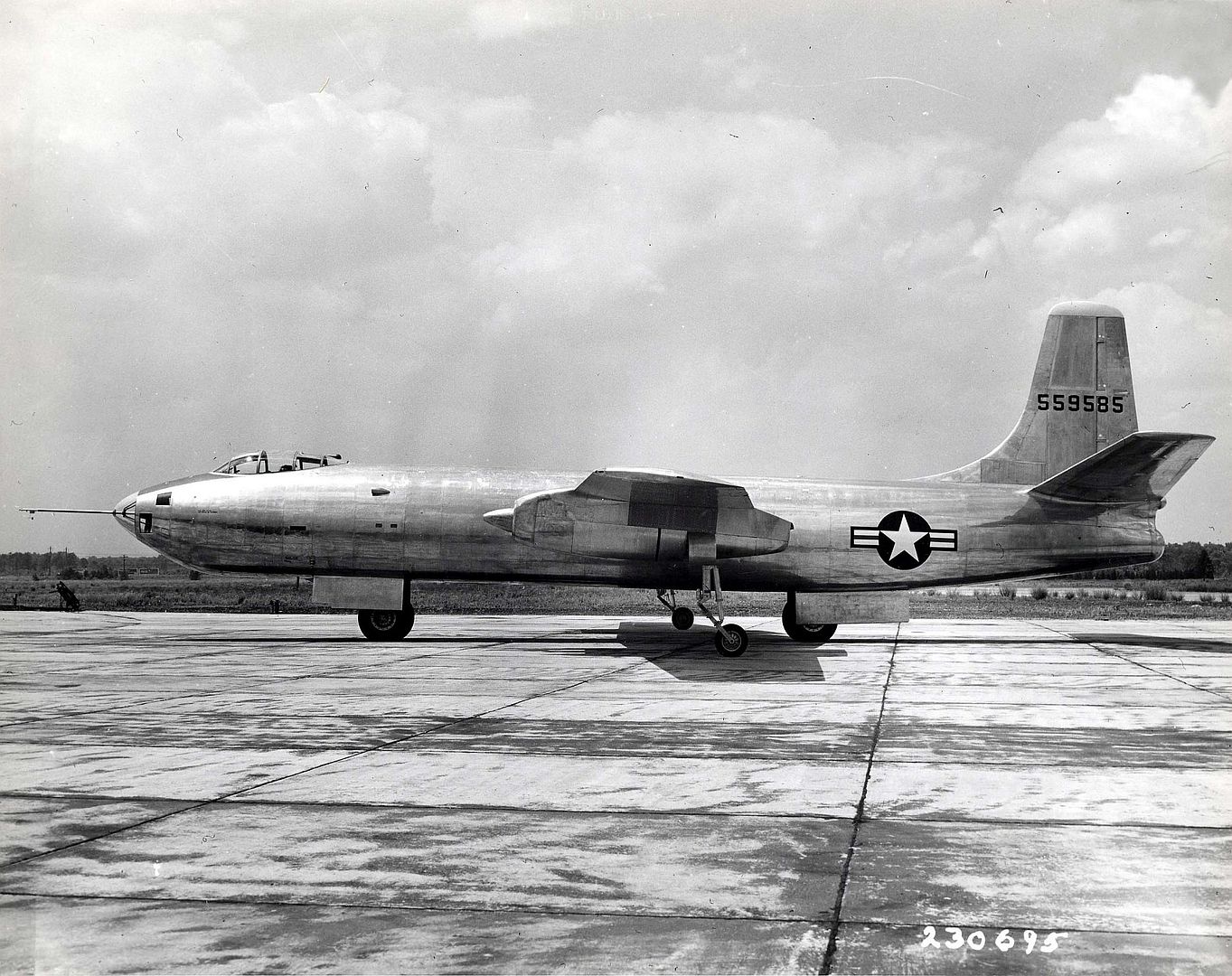
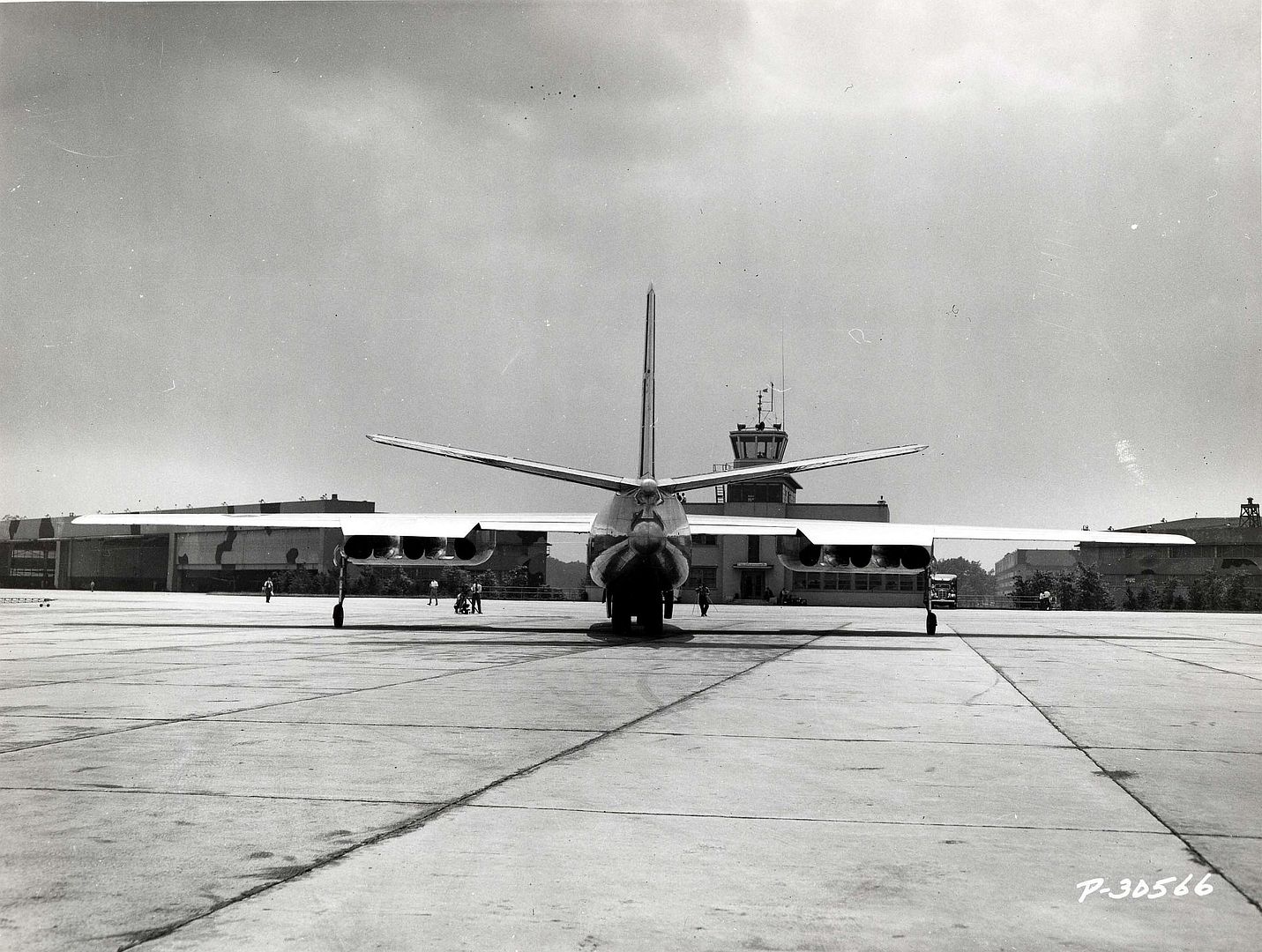
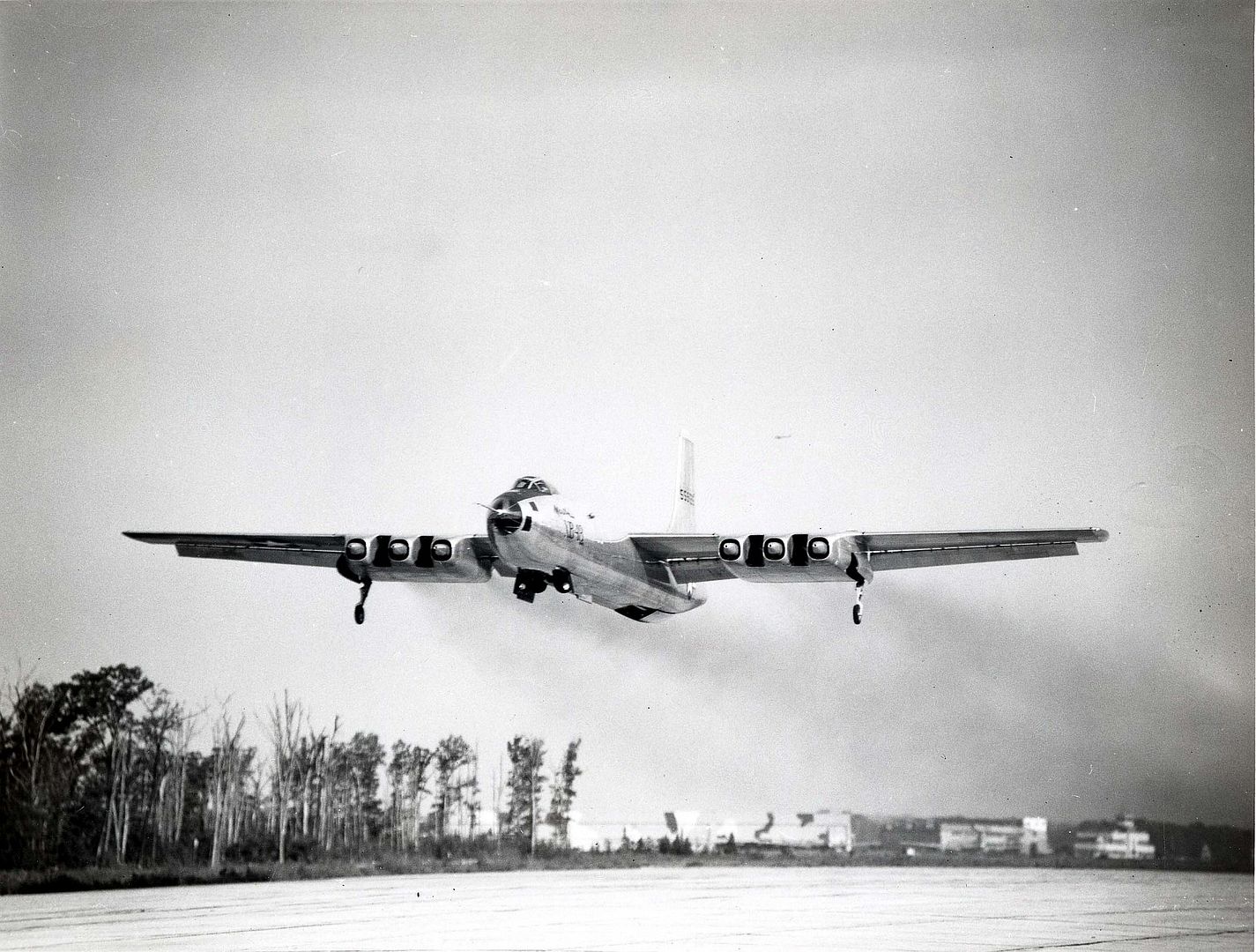
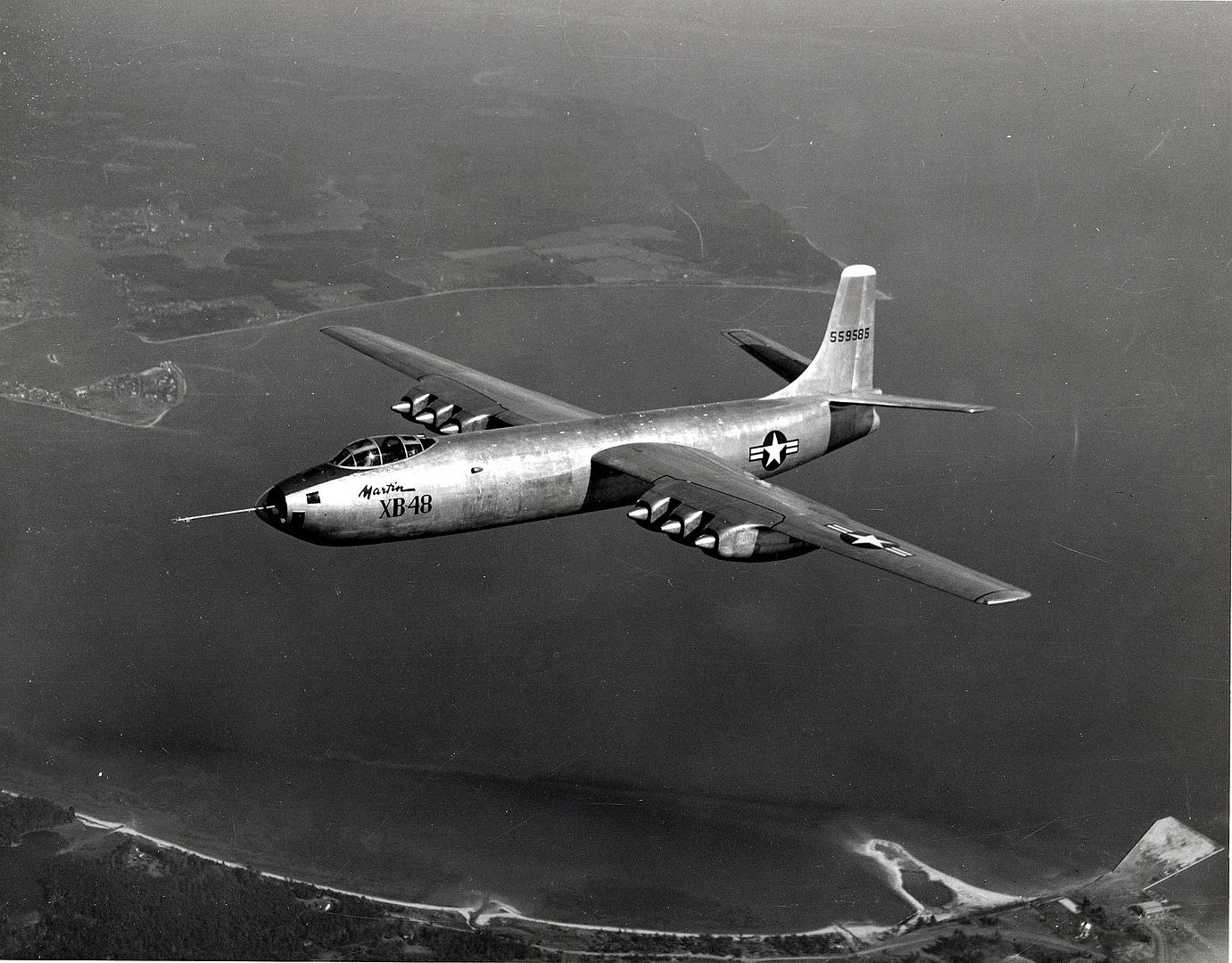

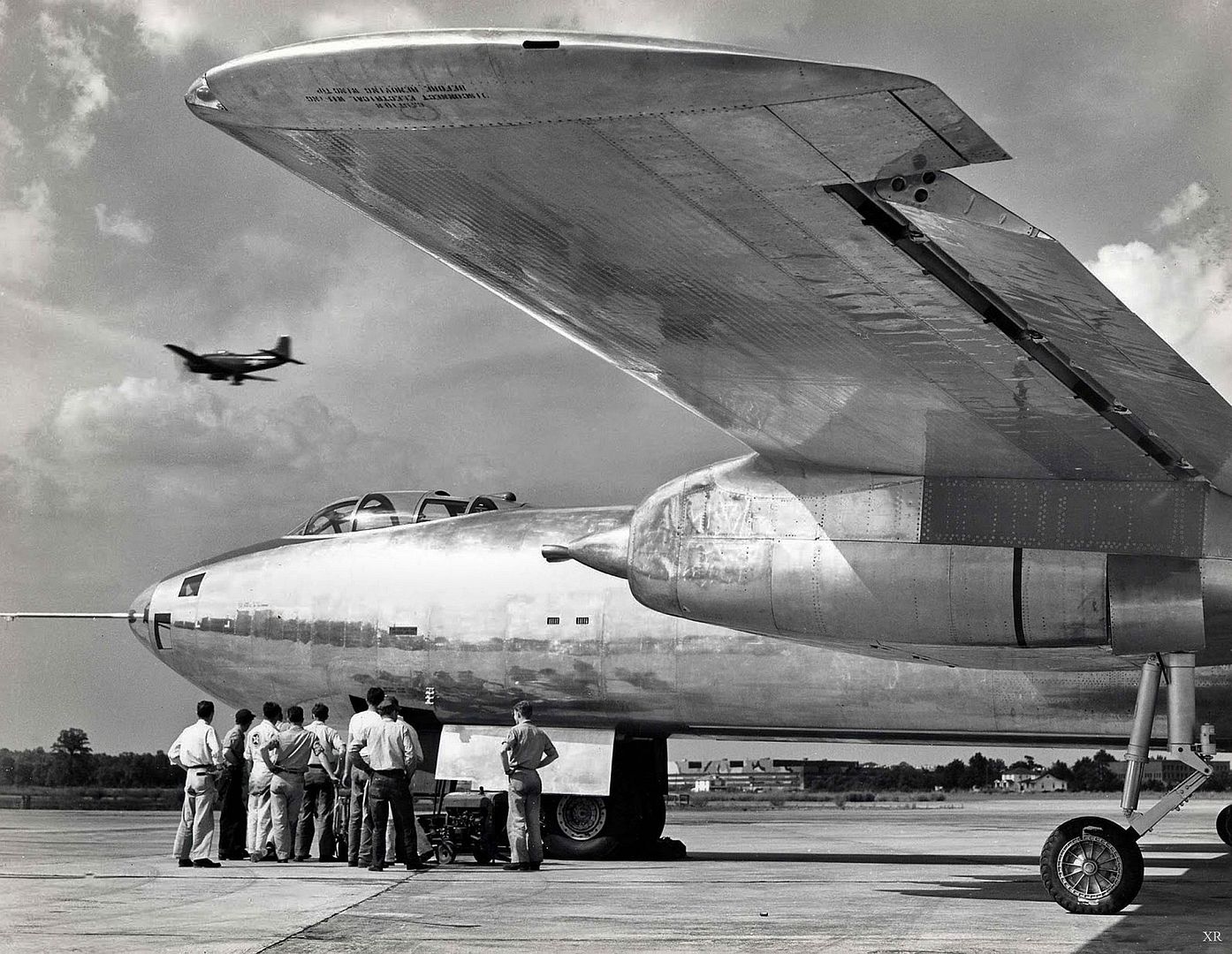
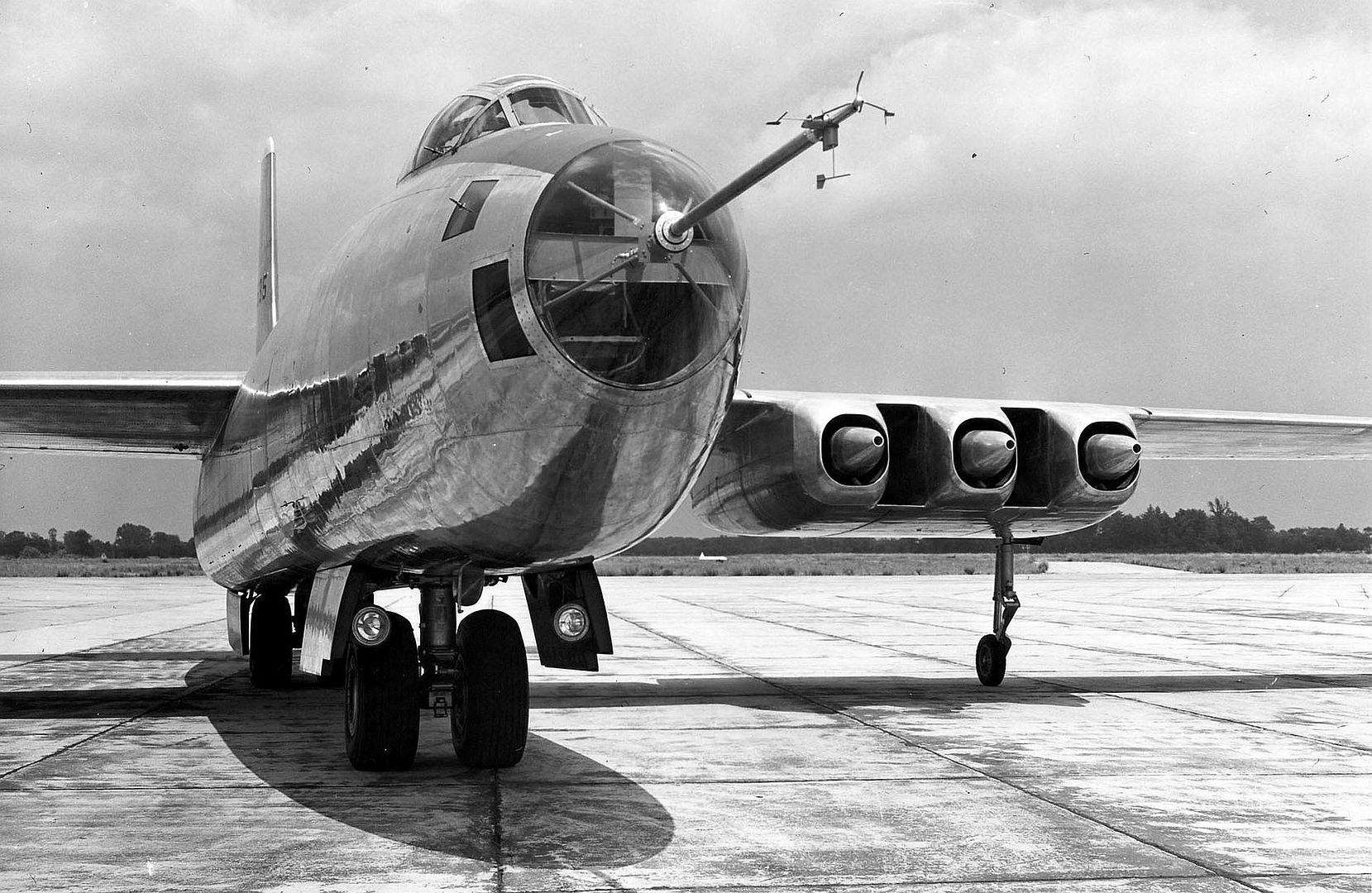
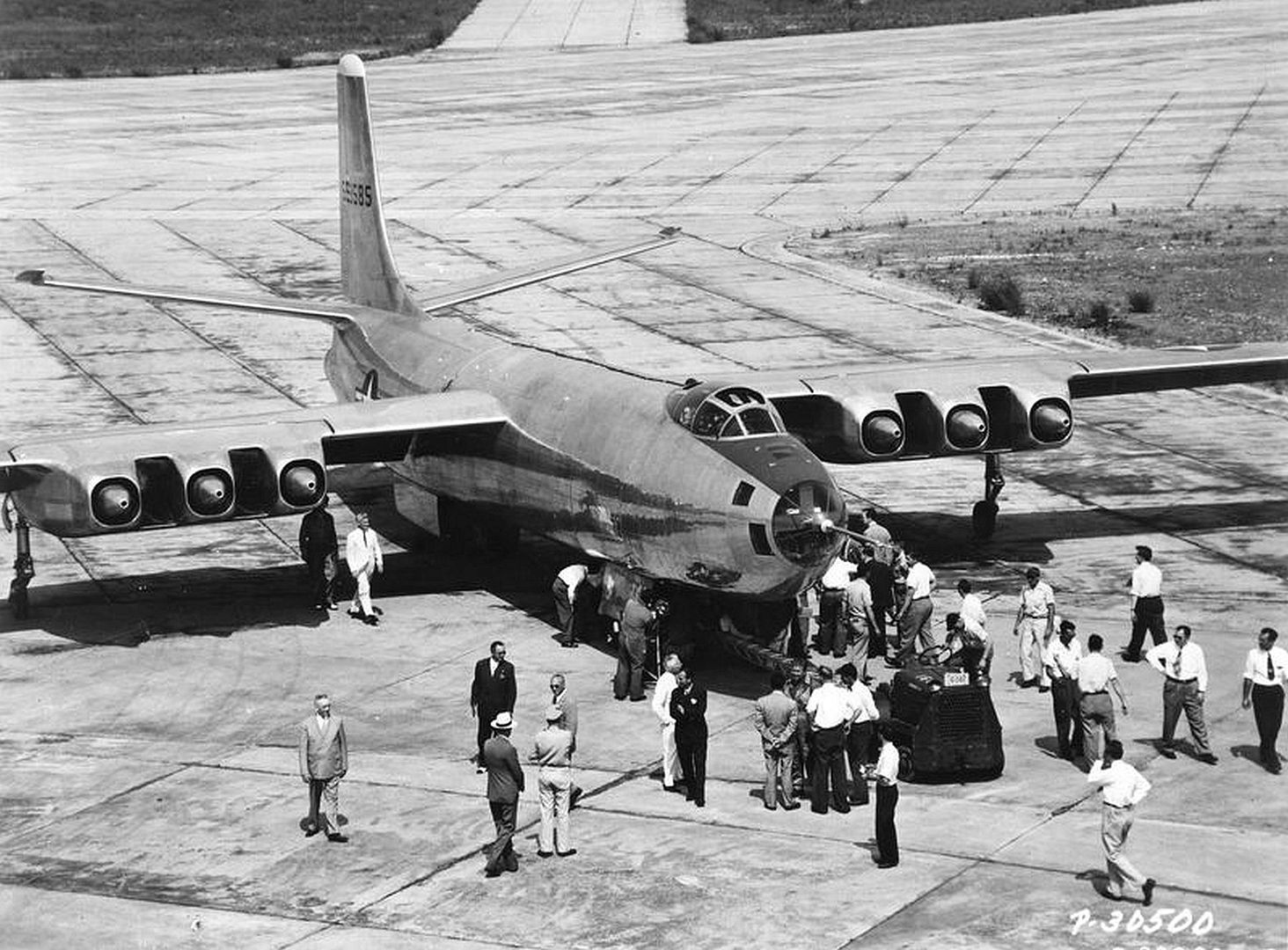


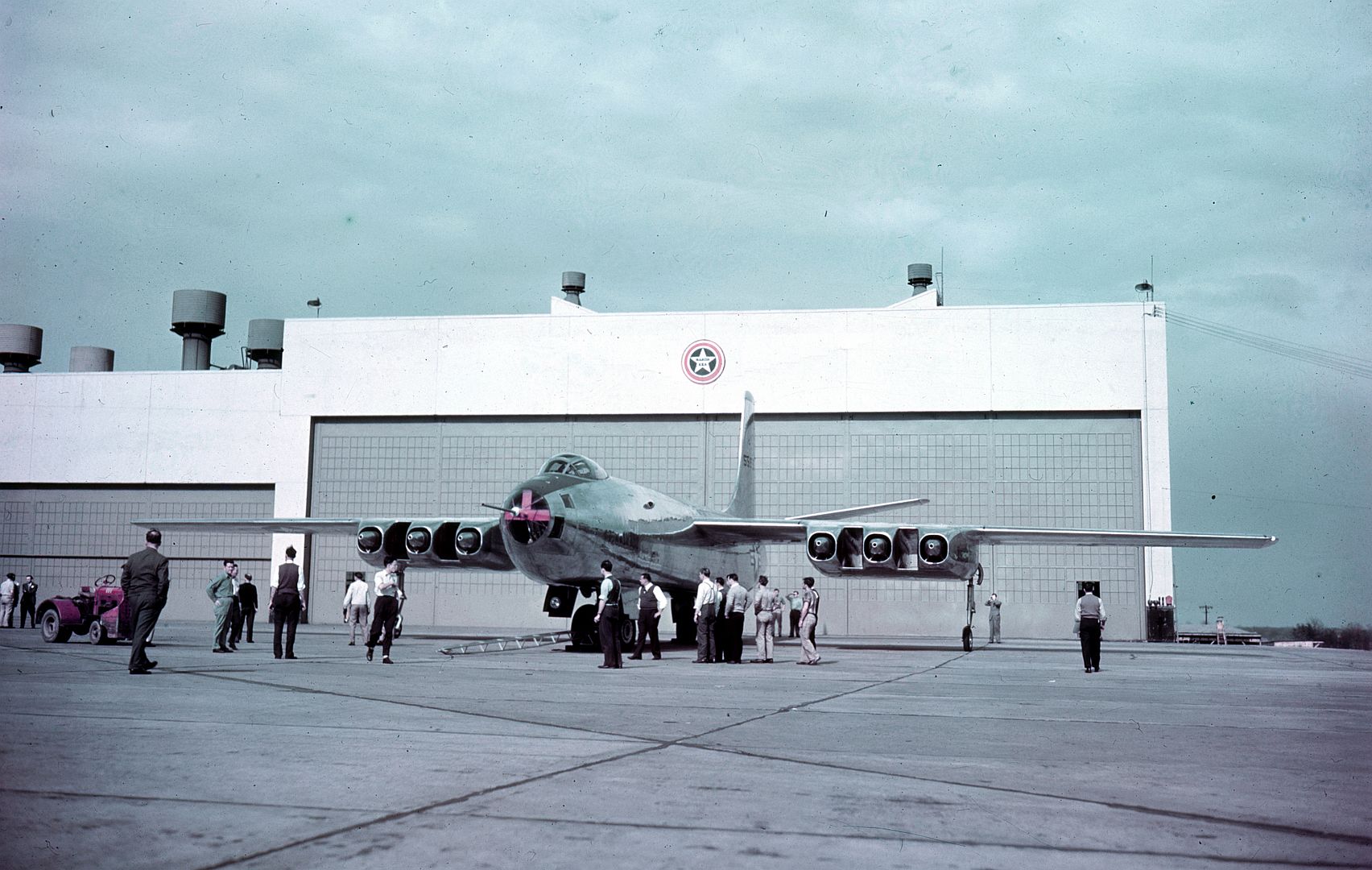

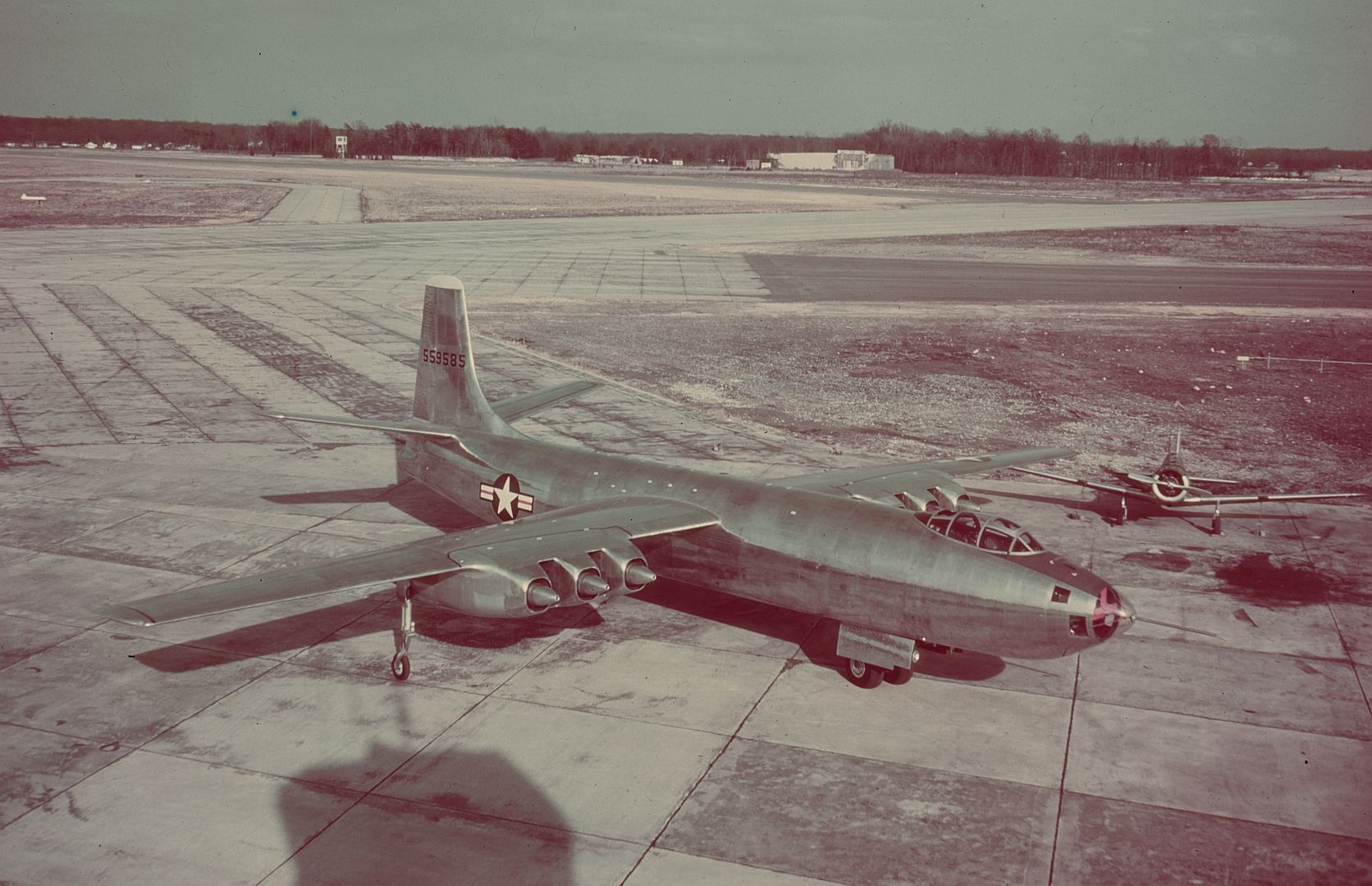
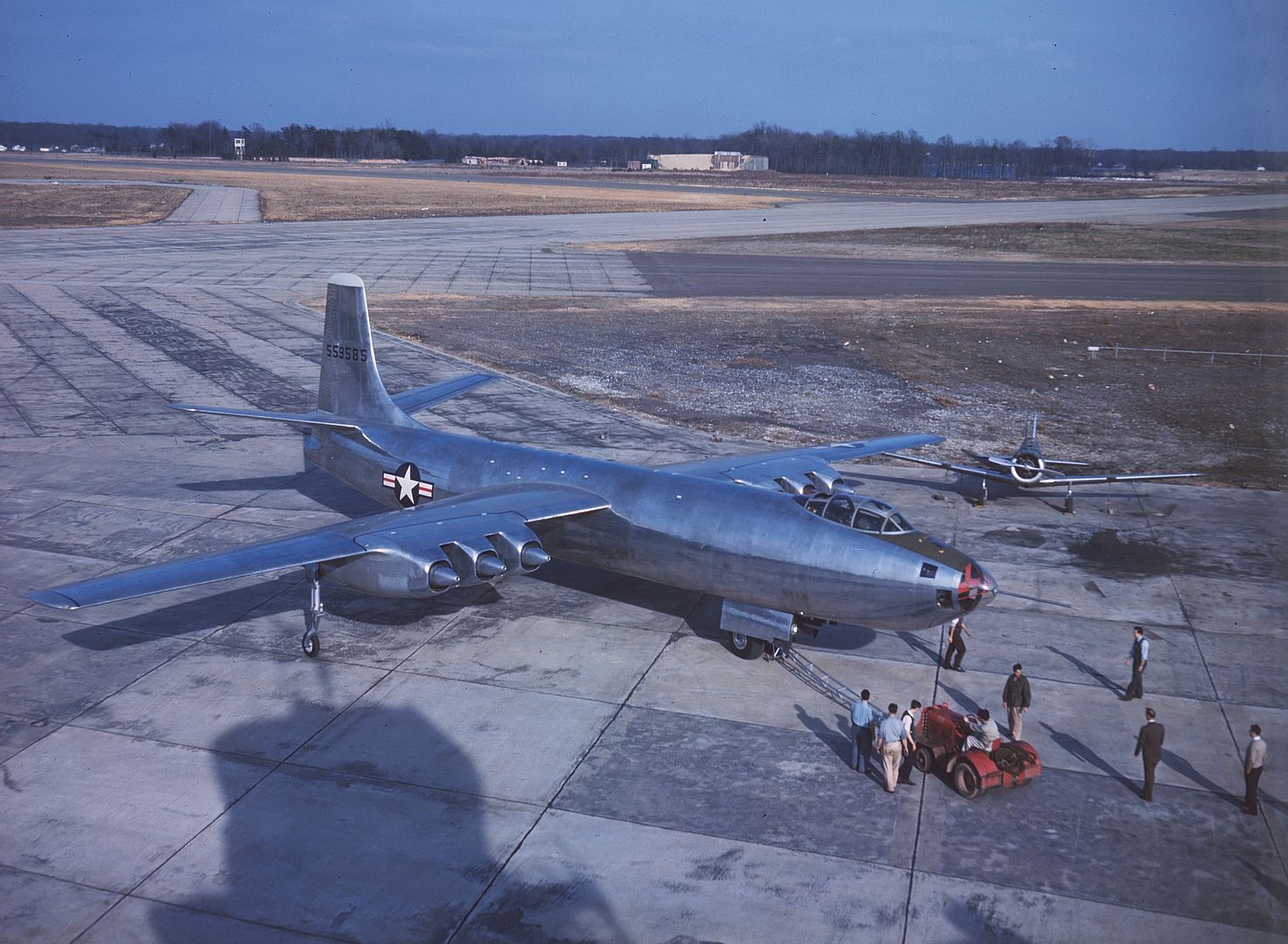
General characteristics
Crew: three (pilot, co-pilot, and bomber-navigator)
Length: 85 ft 9 in (26.14 m)
Wingspan: 108 ft 4 in (33.02 m)
Height: 26 ft 6 in (8.08 m)
Wing area: 1,330 sq ft (123.5 m2)
Empty weight: 58,500 lb (26,535 kg)
Gross weight: 92,600 lb (42,000 kg)
Max takeoff weight: 102,600 lb (46,540 kg)
Powerplant: 6 × General Electric J35 axial flow turbojet, 3,820 lbf (17.0 kN) thrust each
Performance
Maximum speed: 454 kn (523 mph, 841 km/h) at 35,000 ft
Cruise speed: 361 kn (415 mph, 668 km/h)
Range: 1,566 nmi (1,802 mi, 2,900 km)
Combat range: 691 nmi (795 mi, 1,280 km)
Service ceiling: 39,400 ft (12,009 m)
Rate of climb: 4,200 ft/min (21.3 m/s)
Armament
Guns: 2 × .50 in (12.7 mm) M-2 machine guns in tail turret (proposed)
Bombs: 1 × 20,000 lb (9,980 kg) or 36 × 250 lb (113 kg)
(Text from here - https://www.joebaugher.com)
Post a reply
- Go to Previous topic
- Go to Next topic
- Go to Welcome
- Go to Introduce Yourself
- Go to General Discussion
- Go to Screenshots, Images and Videos
- Go to Off topic
- Go to Works in Progress
- Go to Skinning Tips / Tutorials
- Go to Skin Requests
- Go to IJAAF Library
- Go to Luftwaffe Library
- Go to RAF Library
- Go to USAAF / USN Library
- Go to Misc Library
- Go to The Ops Room
- Go to Made in Germany
- Go to Campaigns and Missions
- Go to Works in Progress
- Go to Juri's Air-Raid Shelter
- Go to Campaigns and Missions
- Go to Works in Progress
- Go to Skinpacks
- Go to External Projects Discussion
- Go to Books & Resources
